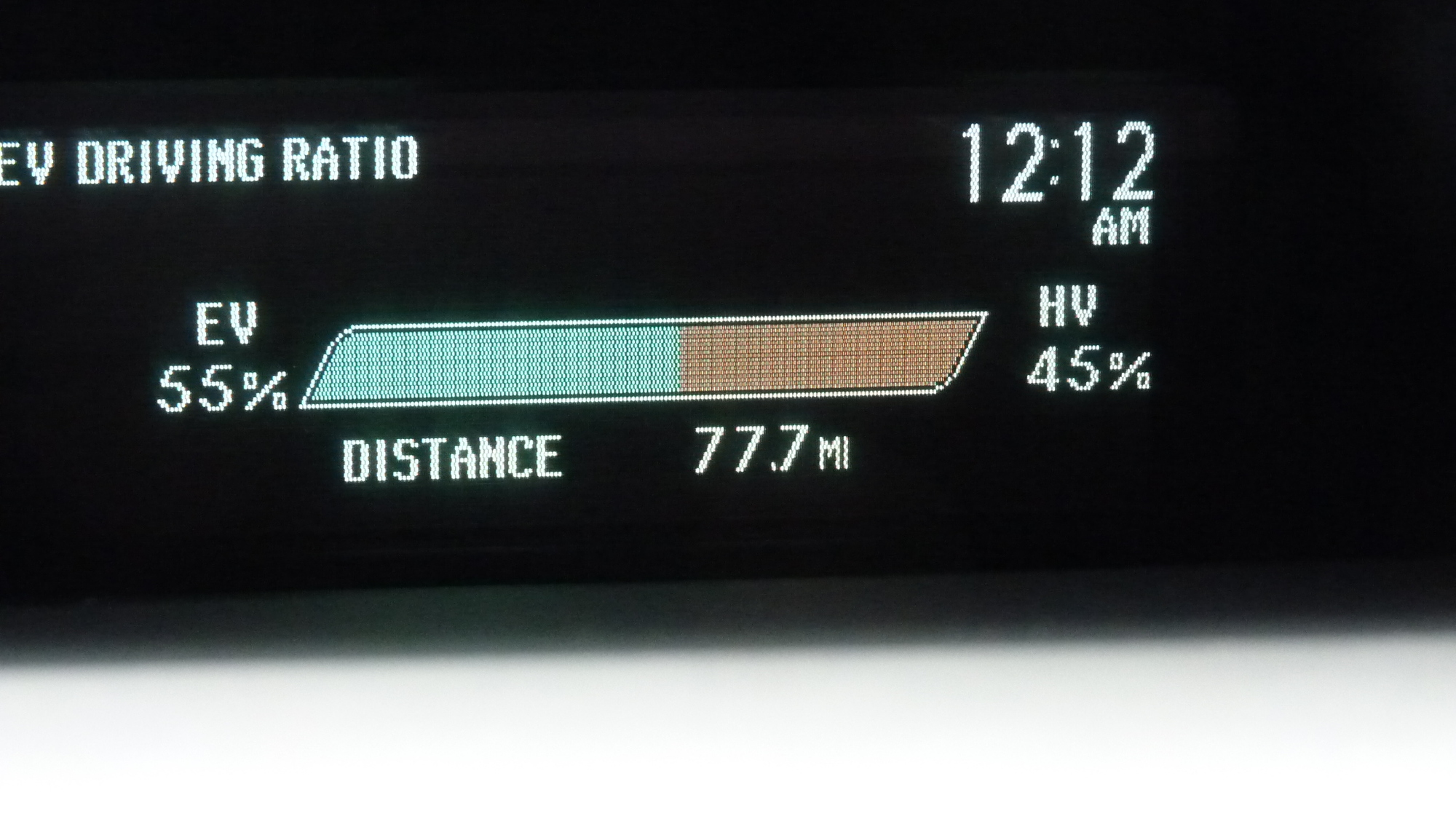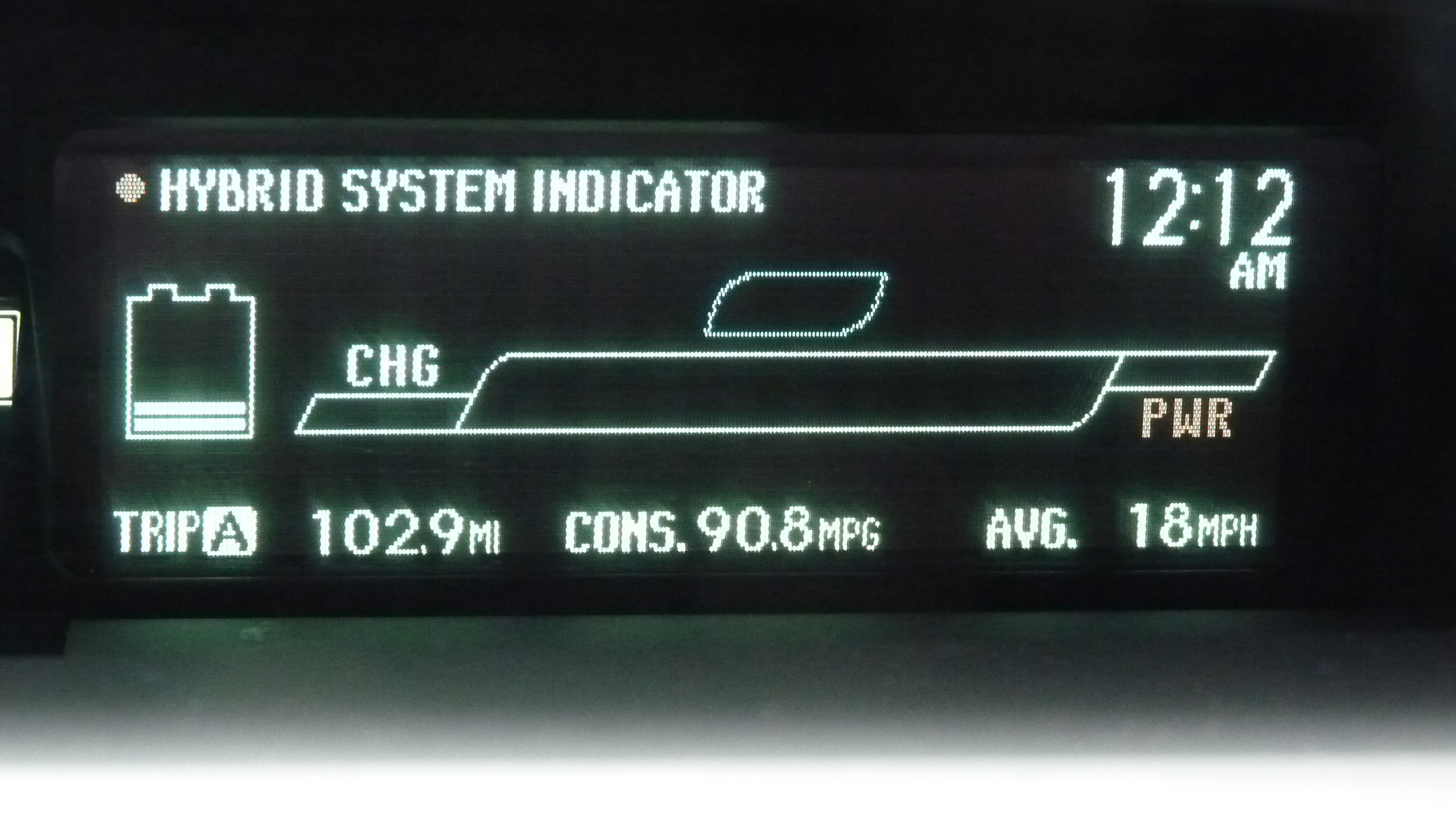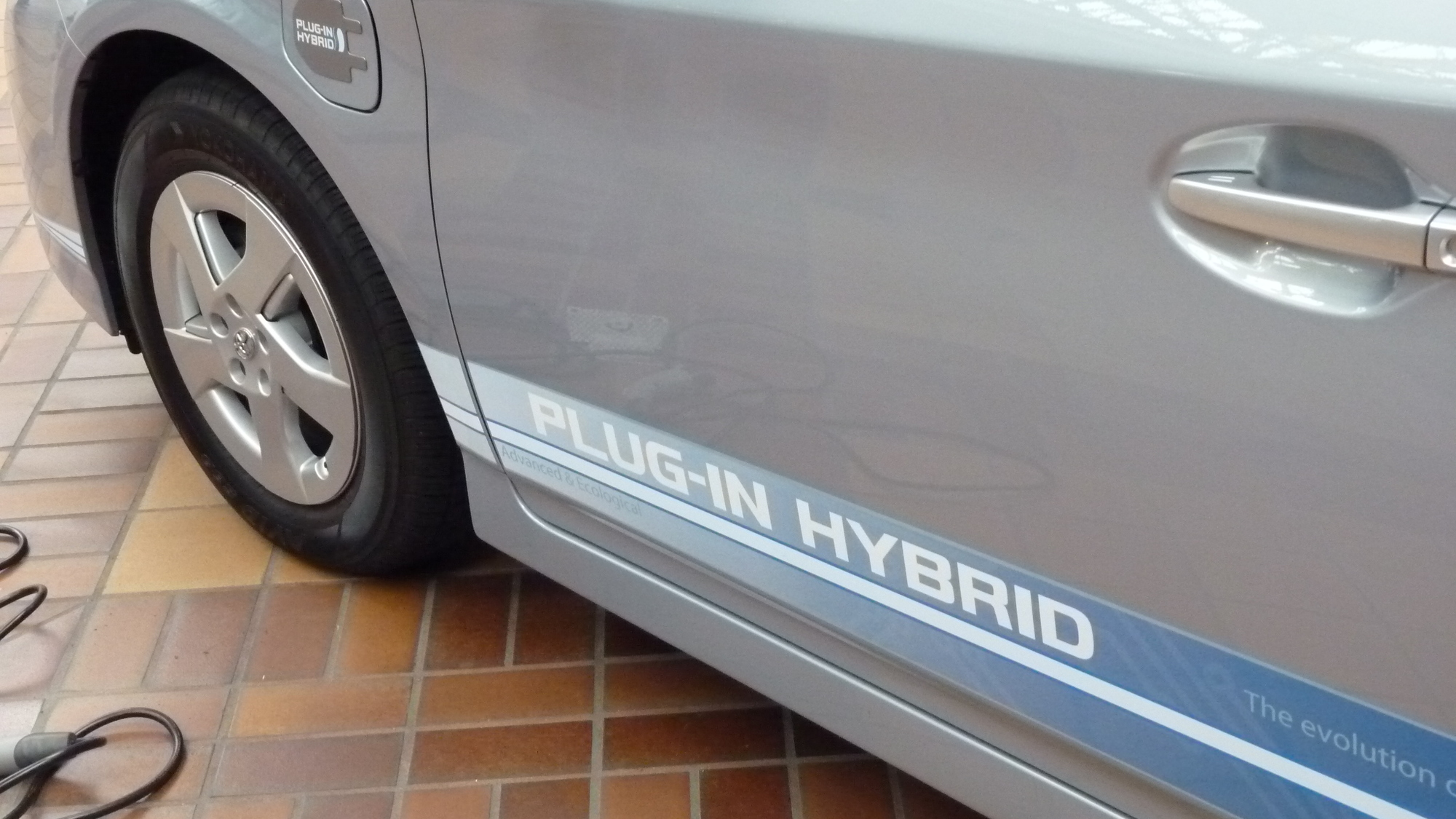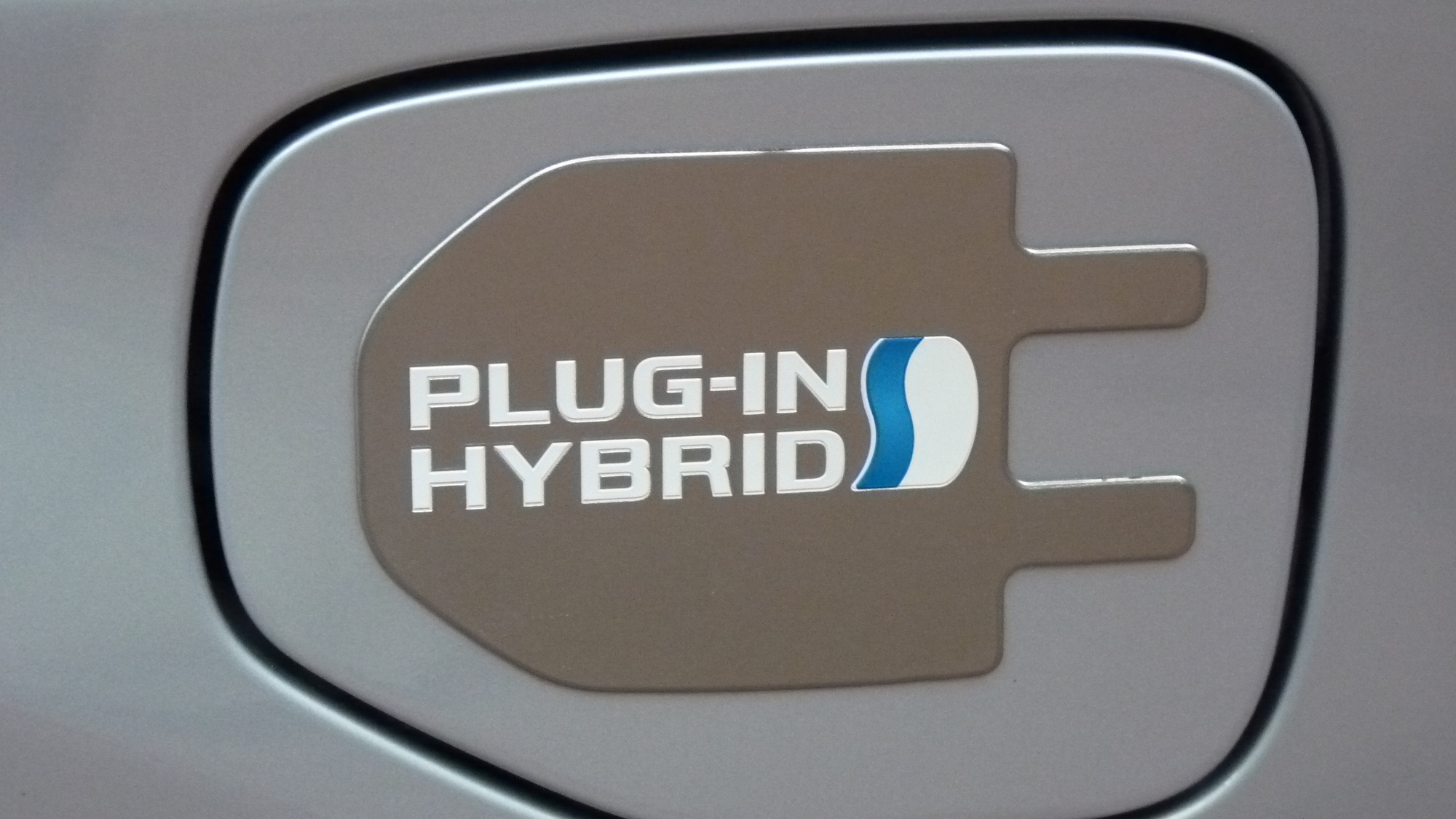Over six days of driving—limited to around-town trips—we put about 103 miles on a fleet-test Toyota Prius Plug-In, averaging 90.8 miles per gallon. In that time, we gave the Prius Plug-In five full charges and two partial ones, and according to the trip computer, we covered 77.7 miles in EV mode.
As we've reported in prior driving impressions, the Plug-In, which won't go on sale until spring of 2012, will move on—or primarily on—electric power for up to 14 or so miles per charge, and a full charge only takes about three hours with a standard 110V household power outlet.
There are several conversation points here, and it takes some juggling of figures to get a grasp of whether the plug-in might be right for you. That starts with two big questions: Firstly, how much does the Prius cost to run on electric power versus normal hybrid operation; and secondly, what's the net difference in carbon footprint and emissions?
Both of those answers are going to be dramatically different from family to family, depending on how often you remember to plug in, how far you travel per trip and each day, and whether it's possible or convenient at waypoints.
Charges cost less than 50 cents a pop
First, the cost-of-ownership question. According to Toyota spokesman John Hanson, the Prius PHEV only uses about 3.8 kWh of the battery's 5.2-kWh capacity (for battery longevity). Starting with what electricity costs me here in Portland, Oregon—11.7 cents per kWh, slightly higher than the 11.04-cent national average at the end of last year—that pegs each full charge at about 44 cents. With a total of about six charges, given the five full charges and two partial ones, that puts our total cost of electricity at about $2.67.
In a driving style that's comparable to what we followed with the Plug-In—which is to say gentle and careful, with only a couple of exceptions to test the power on tap—we've seen in the range of 48 mpg in the standard Toyota Prius. So we would have used about 2.15 gallons of gasoline in a non-Plug-In model. At the current national average of about $3.54 a gallon, that's $7.61 in a standard Prius to cover those 103 miles. In our PHEV test car, we used 1.13 gallons ($4.01), plus that $2.67 in electricity—bringing our total for the PHEV of $6.68.
Just to index this in some way, here it is adjusted for 100 miles, at the average cost of residential electricity:
Prius Plug-In (100 miles): $6.12
Standard Prius (estimate, 100 mi): $6.98
Difference per 100 miles: $0.86
Difference per 10,000 miles: $86
Difference per 100,000 miles: $860
Payback? Probably not.
With the 2012 Toyota Prius Plug-In expected to sell at $3,500 to $5,000 more than a comparable Prius, payback in this traditional sense probably isn't going to happen—even if gas prices double.
Now let's look at the second issue—emissions. If we used six full charges, and capacity is roughly 3.8 kWh, we used a total of about 22.8 kWh for 103 miles, or about 22.16 kWh for 100 miles. That's about 222 kW over 10,000 miles, charging with the sort of frequency we did (which would mean an average twice a day for a 10,000-mile annual commuter).
Using the national average of 1.297 pounds of CO2 per kWh, that's only about 288 pounds of CO2 from our charges. Again using the assumption of about 91 mpg in the Plug-In versus 48 in the standard Prius (from 55-percent EV Mode use), that's 2.08 gallons per 100 miles in the Prius, 1.10 in the Plug-In. Adapting 2.97 tons per 15,000 miles to 10,000 miles results in 1.98 tons. We then take the ratio of fuel used for the plug-in (1.10/2.08) and multiply it by that, then add in the carbon from plugging in.
Shrink your carbon footprint—significantly
Altogether the difference is very significant, with the standard Prius emitting nearly 70 percent more CO2:
Greenhouse gases (CO2) per 10,000 miles:
Standard Prius: 1.98 tons
Prius Plug-In: 1.18 tons
For other emissions, the grid has some cleaning-up to do
As for smog-forming emissions, it's another matter entirely. While going electric greatly reduces our carbon footprint for vehicles, our power plants, on average, are much dirtier than the tailpipes of our newest, cleanest vehicles; coal plants in particular emit significant amounts of sulfur dioxide as well as NOx. Some argue that increasing the number of electric vehicles will speed the replacement of our oldest dirtiest power stations, and in some situations major power plants are hundreds of miles from urban centers, keeping them from contributing to local smog issues.
While this was harder to calculate, we estimated overall smog-forming emissions based on the same proportion of plugging in, over 10,000 miles annually. The Plug-In would use about 2.2 Mwh per year, and based on estimations in several papers, 2.5 pounds of NOx per MWh is a rough equivalent average emissions level in the U.S. Of course, it varies drastically by region within the U.S.; check with your local power provider for more information.Smog-forming pollution per 10,000 miles:
Standard Prius (NOx + NMOG): 0.66 pounds (std Prius)
Prius Plug-In (NOx): 5.85 pounds
Final thoughts: Ask these questions for yourself
While the Prius Plug-In probably won't pay off economically, it makes sense under some situations if you want to make even more of a difference in cutting carbon emissions. If you plan to charge it only occasionally, or drive longer distances, carrying the extra 300 pounds of the larger battery pack all the time might offset the gains from charging; consider a longer-range EV like the Nissan Leaf, a plug-in with a longer electric range like the Chevrolet Volt, or a hybrid like the Prius or the Ford Fusion Hybrid. On the other hand, if you mainly take short trips, faithfully charge up in between errands, and can cover most of your driving in EV Mode, you could very significantly cut carbon emissions with a Prius Plug-In—and still have a vehicle that's good for longer trips.



















